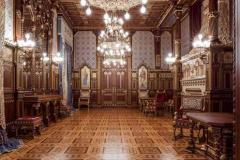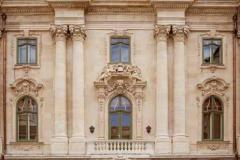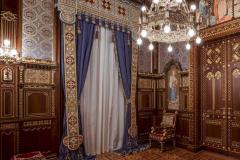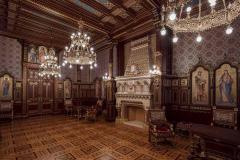The Heritage of Alajos Hauszmann Comes to Life
St Stephen’s Hall Reconstructed in the Royal Palace of Buda
Restoration: Tibor Angyal
Text: Kornél Baliga
Photos: Várkapitányság
Recently recreated, St Stephen’s Hall is a unique phenomenon: it is a completely destroyed interior reborn, not only regarding architecture and applied arts, but furnished in an authentic way including every detail, such as furniture and decoration, so that it has the potential to entirely restore the original atmosphere it may have had once in its past glory. The coronation ceremony in 1867 had already proved that the palace built during the reign of Queen Maria Theresa was insufficient to meet the needs of the court. Thus a decree in 1885 set the goal to have it extended. Architect Miklós Ybl, who was commissioned to design the project, suggested to have it extended towards Krisztinaváros, which necessitated the construction of a large terrace-like substructure, that would have reached beyond the palace fields. Ybl connected the old and the new wing with a gate-like new structure in the north and the south respectively. After his death, Alajos Hauszmann took over the project, and designed three so-called historic halls, among others, one of them being the room devoted to king St Stephen, of the Árpád dynasty, which was completely destroyed in World War II. In the early 2010s, art historian Péter Rostás had the idea that St Stephen’s Hall could function as the main attraction of the exhibition presenting the history of the Royal Palace of Buda if rebuilt on the site of the original structure as its 1:1 scale model. Supervised by Péter Rostás, the reconstruction plans were made by Tibor Angyal. The laudable execution of the reconstruction is predominantly due to the mastery of Hungarian craftsmen and artists.




